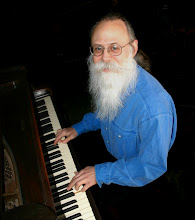
Ah, Chickering - at turns eccentric, maddening, brilliant, heart-breaking! Being a Boston Chickering fan is a lot like being a Boston Red Sox fan. There's even the rivalry with a New York team named Steinway. In the great Paris Exhibition of 1867, both Chickering and Steinway claimed top prizes (and fought over who had "won"), but even then, Steinway was in the lead technologically, and never looked back.
It wasn't that Chickering was not innovative. Their penchant for tinkering was such that it is said that no two Chickerings were made alike. Their innovations, however, did not often lead to an actual evolution of piano design and manufacture. When the last Chickering brother passed away, in 1896, their pianos were charming, but obsolete by the time they rolled out the factory door.
The administration of George Chickering had been a disaster for the company, which had had to wait until he died to begin modernizing their designs. Until the company was finally bought by the American Piano Company, twelve years later, it produced a run of more modern grand pianos. Some of these "transitional" pianos are a nightmare, some are fantastic, and all are targets of eager rebuilders wanting to restore the glory and beauty of a Chickering grand. This task has been the undoing of countless technicians who had no idea what they were getting into, and who did not have the skill to deal with the eccentricities and unconventionalities of these old Chickerings. But the pianos sure are pretty refinished.

In Newport there is a lovely old bed & breakfast called Sanford-Covell Villa Marina. The owner has her grandmother's and great-grandmother's 6'5" Chickering rosewood grands installed in the Victorian parlor. The older one was built in 1892, and the other one is a transitional grand from 1903. The description and close-up photos are of the older piano, on the left.
This grand, made in the waning years of George Chickering's tenure, has a pieced case of four parts: the left straight side; a broad, curved tail; the curve of the right bent side; and the cheek, or straight portion, of the bent side. Modern piano cases, in contrast, are made of a continous, molded rim. The bass bridge is also pieced, in three parts, rather than shaped into a continuous curve (though the cap is continuous). There is a separate bridge for the tenor section. There are 88 notes, and all 88 are agraffed, an unusual feature. Finally, the portion of the plate covering the slanted pinblock is a separate piece on top of which the rest of the plate is bolted.
It would take days to detail the arcana of the action. It suffices to say that the function of the various parts resembles a modern action, but the specifics of their manufacture and assembly are entirely exotic.
Though apparently vexing for the countless technicians of the past century, this is a sweet, lovable, old-fashioned instrument, somewhat frail and rickety, but still pleasing to play.























1 comments:
Here is a link to Chickering and Sons history.
Chickering and sons
Post a Comment